Henry Moore: New exhibition shows sculptor's 'exciting decade'
- Published

Sculpture conservator James Copper prepares the monumental plaster "Large Spindle Piece" which goes on show for the first time
A new exhibition showcasing the work of Henry Moore is opening in the place where he settled and worked.
Thirty works by the acclaimed sculptor will be exhibited at his Perry Green studios in Much Hadham, Hertfordshire.
The exhibition - Henry Moore: The Sixties - includes drawings and pieces from the peak of his career.
Curator Hannah Higham said it was "really exciting and appropriate" to have the display at the artist's former home.
Visitors can "see how the evolution of his ideas in this decade sits in the landscape in which he worked," she said.
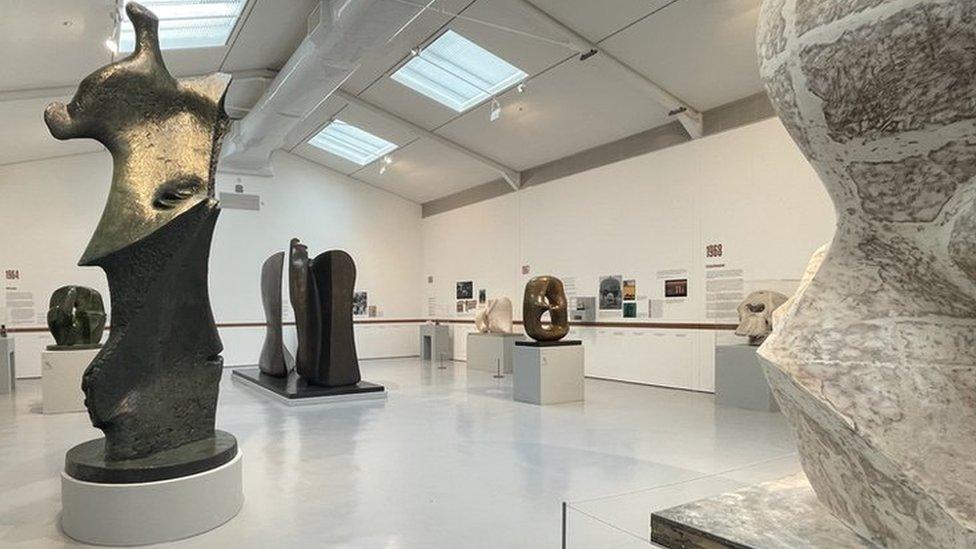
Curator Hannah Higham said the exhibition shows how his studios developed to "accommodate the colossal sculptures" he was making in the decade
As well as the bronzes associated with the sculptor, Moore experimented with new materials in the 1960s, including polystyrene, fibreglass, porcelain and felt pens - and new techniques, which enabled him to work on a much larger scale and increase the scale and speed of production.
Among the pieces on show is the plaster Large Spindle Piece 1968, which has never been exhibited before.
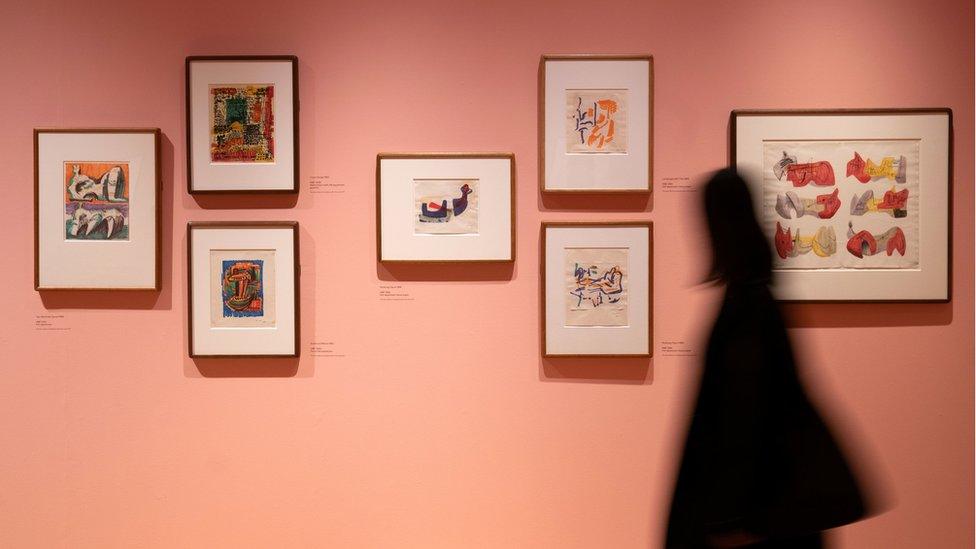
Felt tip pen drawings form part of the Henry Moore: The Sixties exhibition which opens to the public on 1 April
Archive footage of the construction of Moore's plastic studio, and the installation of some of his huge bronzes, will also feature.
Exhibition posters and catalogues from all over the world show how his works were displayed at that time.
Together they will "illuminate the innovation of an artist himself in his sixties but at the height of his powers", the venue said.
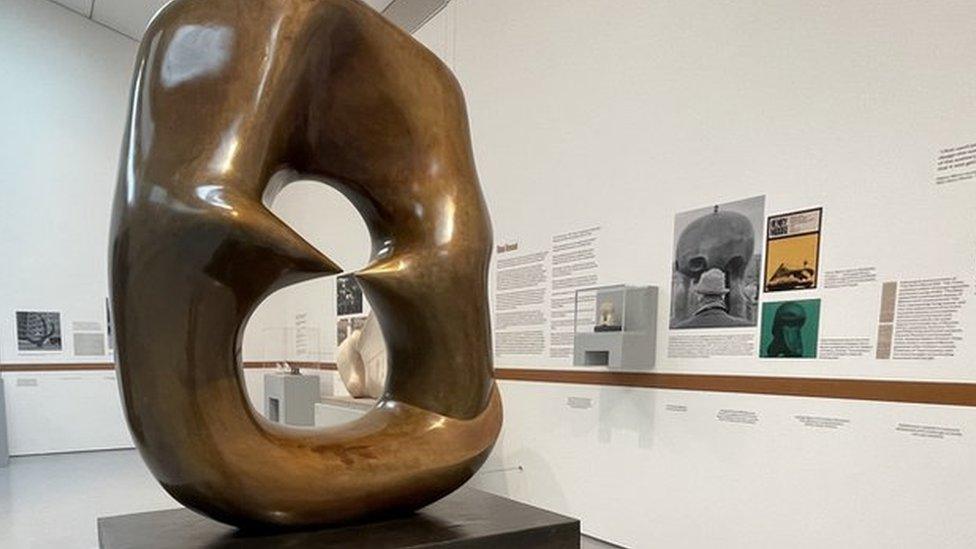
Moore was "really interested in pointed forms" in the 1960s, curator Hannah Higham said, "forms that are pointing inwards [like "Working Model for Oval with Points"] and create tension but also outwards which really activate the space"
"The Sixties were such an exciting decade for Henry Moore," Ms Higham said.
"It's the decade in which his work gets more abstract, its scale explodes [and] he becomes this kind of global superstar.
"We've created this three dimensional timeline that takes you through the decade so that we can really think about the context that Moore was working in.
"It's really nice for us to be able to pull out some of these stories of the genesis and reception of the sculpture as it happened."

A three-dimensional timeline has been created to show visitors where Moore's work sits in the story of the decade
Ms Higham also said that Moore was "very politically attuned" to the world of the 1960s and due to the "nature aesthetic" his work embodied at the time, he was able to take something from his Hertfordshire home and give it universal appeal.
"He would take a flint or a pebble he'd unearthed from the field outside and he would evolve it into these incredibly beautiful monumental sculptures that can speak of nature," she said.
"In doing so, he created these universal forms that really have an appeal globally and somehow are rather unifying in the way that the public can respond to them whether they are in America or New Zealand or Japan."

Find BBC News: East of England on Facebook, external, Instagram, external and Twitter, external. If you have a story suggestion email eastofenglandnews@bbc.co.uk, external
Related topics
- Published12 May 2021
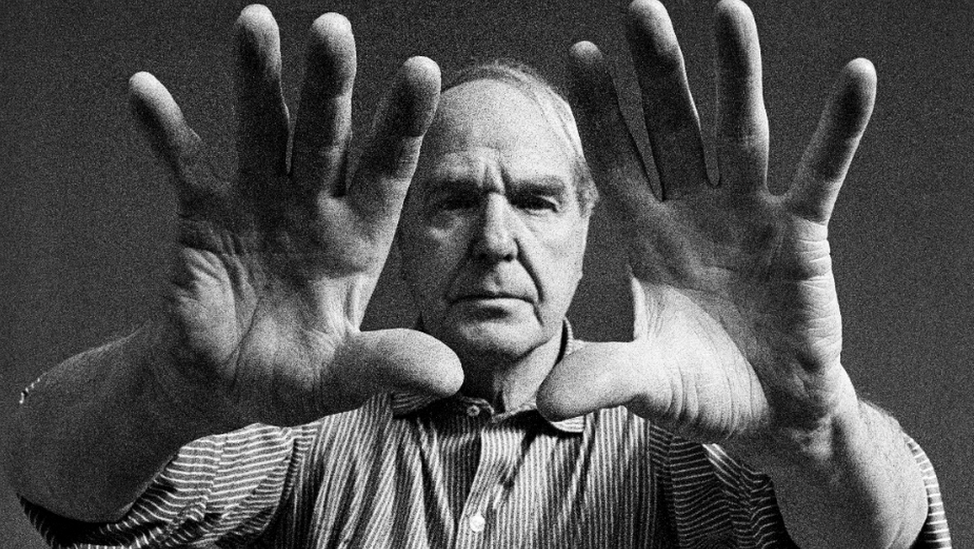
- Published28 July 2021
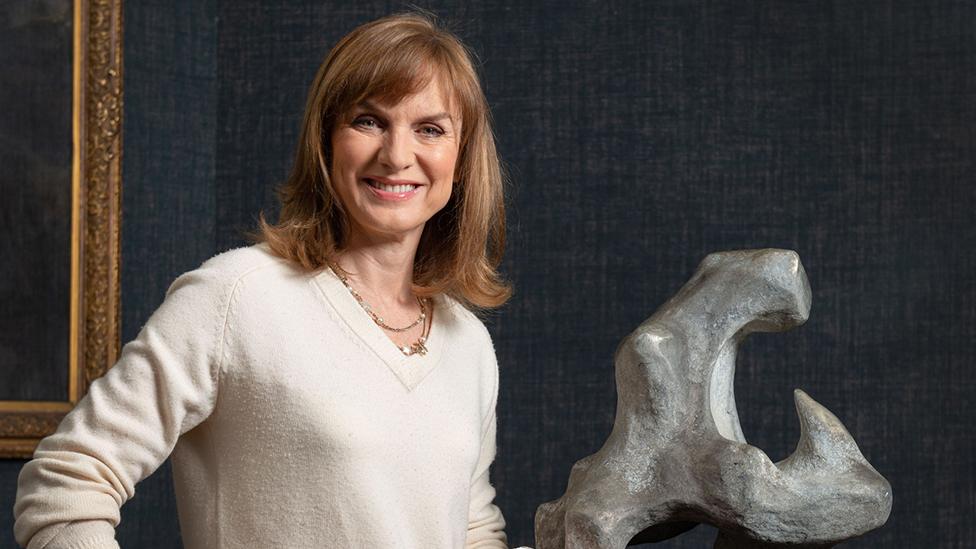
- Published18 February 2020
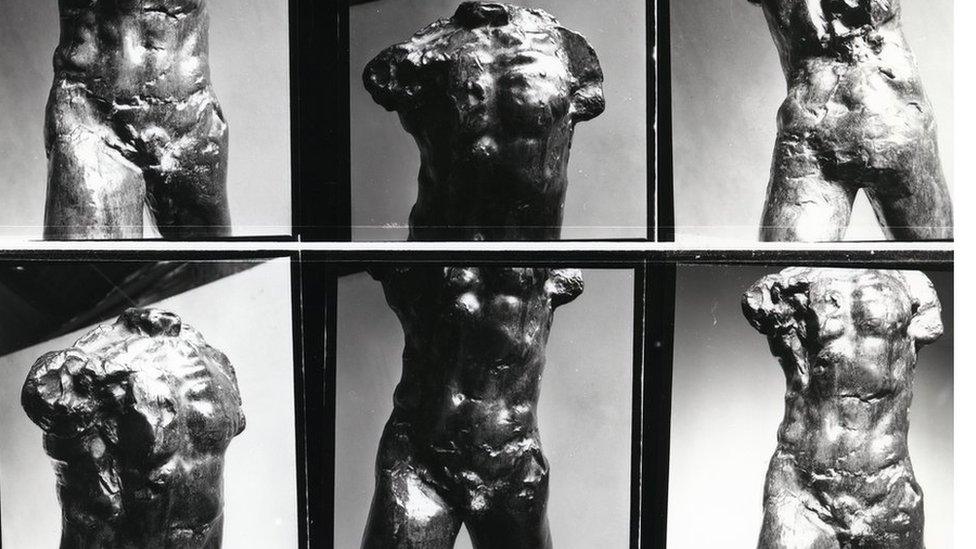
- Published25 September 2017
